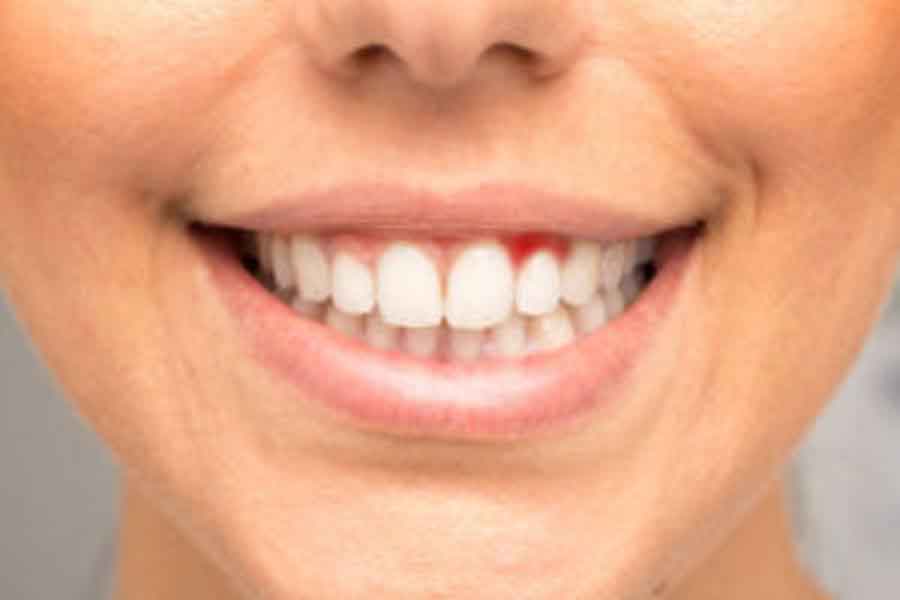Bleeding Gums: Could it be Gum Disease?

We’ve all been there. You’re getting ready to go to bed and are mindlessly plodding through your evening ritual. Now you’re brushing your teeth and are barely paying attention; after all, you’ve been doing this your entire life. Then boom! You spit in the sink and see blood.
At first, you get a little panicked, but then you check out your teeth in the mirror and don’t notice anything major. Your gums may be a little red, but it’s no big deal, right? Maybe, and maybe not.
It could be something minor like you were brushing your teeth too hard, but you may also be experiencing one of the most common symptoms of gum disease. In this blog, Nate Gunning, DDS of Signature Smiles Dentistry shares his knowledge about gum disease and why it’s important to pay attention to bleeding gums.
Stages of gum disease explained
Gum disease, an inflammation of the gum tissue, is fairly common. In fact, according to the American Academy of Periodontology, about three out of four Americans have some form of gum disease, also known as periodontal disease. Gum disease is essentially all about the buildup of bacteria and toxins, which, if left untreated, can permanently damage the tissue that ensures the snug fit of your teeth to your gums.
Stage 1: Gingivitis
Gum disease plays out in three stages: gingivitis, periodontitis, and advanced periodontitis. In its early stages, a sticky film called plaque builds up on your teeth. Symptoms may include bleeding, swollen gums, and tenderness.
Stage 2: Periodontitis
If left untreated, gingivitis will progress to periodontitis, where pockets form between your teeth and gums. Gum bleeding is more prevalent, and your teeth may become loose.
Stage 3: Advanced periodontitis
By the time you reach the final stage of gum disease, called advanced periodontitis, your teeth may have shifted, and the connective tissue supporting your teeth will have broken down to the point that your teeth may need to be extracted if you haven’t lost them already.
Gingivitis is reversible
The good news is that even if your bleeding gums turn out to be gum disease, it’s far from a done deal that you’ll suffer permanent damage. In fact, if you have gingivitis, you not only can stop gum disease from progressing, but you can also reverse any damage that’s already happened.
Stave off gum disease with cleanings and checkups
If needed, button up your at-home oral care protocols and make and keep your regular dental cleaning appointments and checkups. During these dental visits, your provider removes the plaque buildup, which has hardened into a substance called tartar — or dental calculus — below the gum line. These appointments also provide an opportunity for your dentist to monitor the health of your gums.
Scaling and root planning for a deep clean
If plaque buildup continues to be a problem, your provider may recommend a deep-cleaning procedure called scaling and root planing. The purpose of this procedure is to treat gum disease and remove the toxins that have resulted. Your provider does this by tackling it on two fronts.
The first step is to scale or remove the plaque and tartar buildup from on the teeth to below the gum line. The second step — the root planning — is all about making future buildup less likely. Your provider does this by smoothing out the rough parts of the tooth-root surfaces to make it harder for plaque, tartar, and toxins to reattach to them.
If you’ve noticed that your gums are bleeding when you brush or floss your teeth and think you may have gum disease, contact Nate Gunning, DDS and the experienced dental team at Signature Smiles Dentistry in Parker, Colorado. We’ll do a thorough dental examination, so we can find out what’s going on.
To book an appointment, call us at 720-738-3832, or request an appointment online.